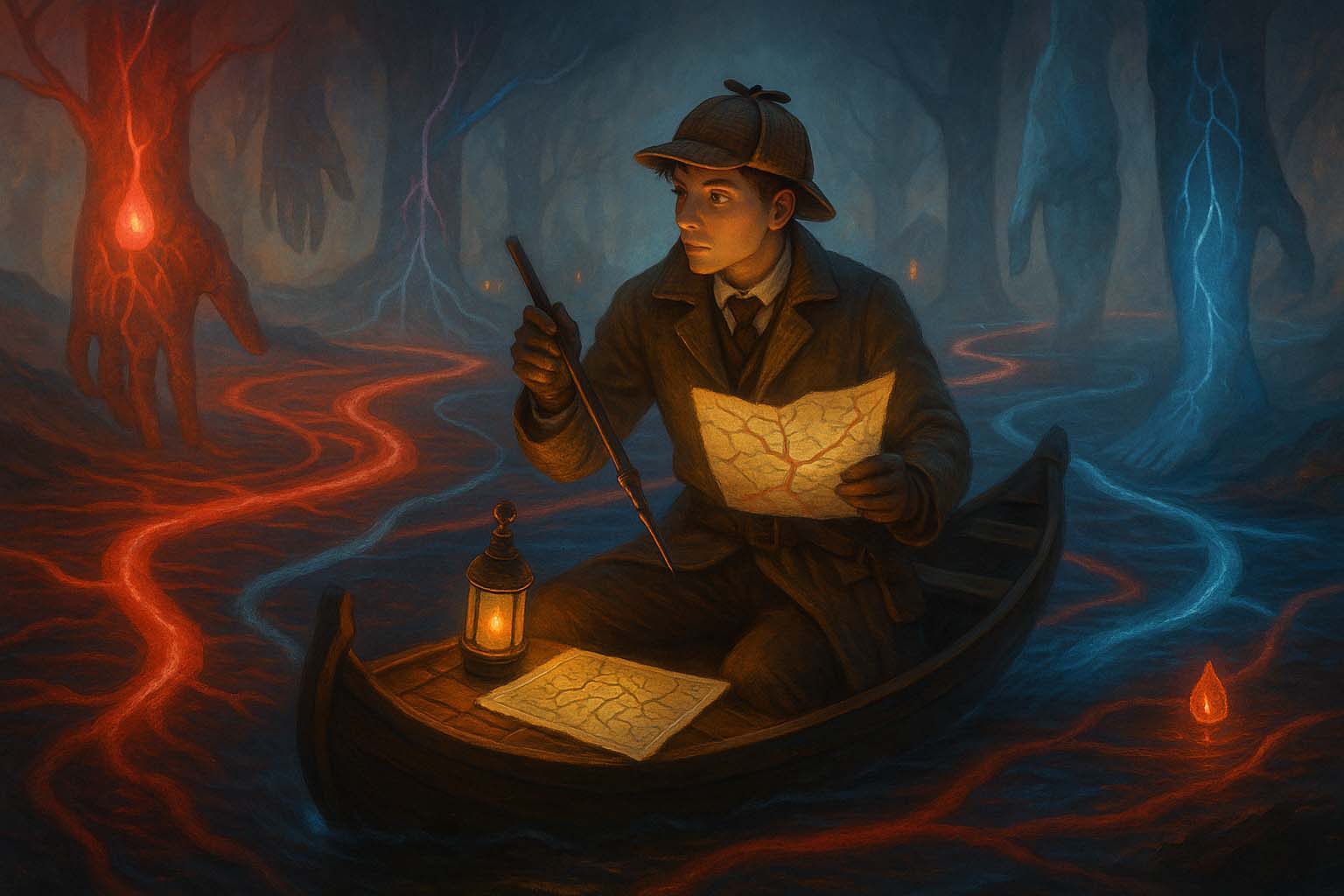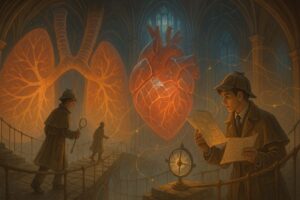
Vascular Surgery
- Posted by admin
- Categories Core Surgical Specialties
- Date May 24, 2025
- Comments 0 comment
The Flow Detective’s Domain – Cracking the Cases of Blocked Paths, Bursting Threats, and the Lifeblood Within
1. Introduction: The Scene of the Specialty
Step into the shoes of a Vascular Surgery sleuth.
This is the discipline of circulation and consequence—where arteries harden, veins fail, and aneurysms wait in silence. Vascular surgeons are the map-readers of the human highway system, restoring blood flow, preventing rupture, and salvaging limbs in the nick of time. Their theatre is often urgent, always meticulous. Welcome to a world where you can’t see the problem—but you feel the pulse change, and where the difference between life and loss may lie in a single stitch.
2. Key Mysteries They Solve (Common Conditions)
These detectives specialise in solving cases involving:
- Peripheral Arterial Disease (PAD) – restoring blood to ischemic limbs.
- Aortic Aneurysms & Dissections – pre-empting rupture in time-sensitive silence.
- Carotid Artery Stenosis – preventing strokes through early intervention.
- Venous Disease & Varicose Veins – managing stasis, thrombosis, and swelling.
Each case navigates life’s vital pathways—where interruption means risk and restoration means redemption.
3. Their Trusted Tools & Techniques
Every detective has their kit—and in Vascular Surgery, tools may include:
- Ultrasound, CT Angiography, and DSA – visualising vessels before and during surgery.
- Open Surgical Repair – grafts, patches, clamps, and endarterectomies.
- Endovascular Techniques – stents, coils, and wires guided from within.
- Bypass Grafting – rerouting flow when native roads collapse.
This is plumbing at its most profound—not water, but life, restored by rerouting and resilience.
4. The Charms of This Field: Why It Captivates the Curious
- Tension and Triumph: A burst aneurysm, a salvaged limb—stakes are high, outcomes dramatic.
- Innovation and Integration: Endovascular and open techniques meet at the cutting edge.
- Anatomical Adventure: Every patient presents a different vascular map.
- Preventative Power: Spotting trouble before it strikes—protecting brain, heart, limb, and life.
This is the specialty where flow is everything—and time is your constant rival.
5. Challenges: The Toughest Cases They Face
- Silent Pathology – Many patients are asymptomatic until disaster looms.
- Comorbid Burden – Diabetes, smoking, hypertension, and renal disease complicate repair.
- Post-Operative Fragility – Grafts can fail; tissues may still die despite intervention.
- Emotional Weight – Decisions about amputation, stroke prevention, and sudden loss are routine.
But the seasoned vascular surgeon knows: delaying disaster is a heroic act in itself.
6. Famous Cases and Hallmark Clues
- The “Classic Presentation” – Sudden onset abdominal pain and hypotension: ruptured abdominal aortic aneurysm (AAA).
- The “Zebra” – Intermittent claudication in a young female: Takayasu arteritis.
- The “Aha Moment” – A non-healing foot ulcer in a diabetic patient: not just local—it’s ischaemic.
7. Your Training Trail: How to Join the Investigation
To become a Vascular Surgery detective:
- Build surgical foundations with a focus on anatomy, hemodynamics, and critical care.
- Train in both open and endovascular techniques—this is a hybrid craft.
- Study imaging interpretation and intraoperative navigation.
- Hone your decision-making in high-stakes moments—sometimes the call is to cut, and sometimes not to.
Whether threading a stent through a narrowing or clamping the aorta in an emergency, you’ll become a master of flow and foresight.
8. Final Words: The Signature of the Vascular Surgery Detective
Vascular surgery detectives keep the highways of life open.
They trace silent threats, act before rupture, and restore movement, oxygen, and survival.
They work in minutes and millimetres—knowing that circulation is not just biology, but destiny.
So if you’re drawn to the pulse of danger and the precision of protection—then this is your surgical path to walk.



